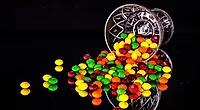California Food Safety Act Signed Into Law, Officially Banning Four Toxic Additives by 2027

Image credit: Skitterphoto via Pexels
The California Food Safety Act—statewide legislation that bans the sale of foods containing four possibly toxic chemical additives—was signed into California law by Governor Gavin Newsom (D) on October 7, 2023.
The legislation, also known as Assembly Bill 418 (AB 418), specifically prohibits the sale of food containing red dye 3, potassium bromate, brominated vegetable oil, and propylparaben. California Assemblyman Jesse Gabriel (D-46), the original author of AB 418, and Governor Newsom cited the EU’s ban of the four chemicals in their reasoning for introducing and signing the bill into law, respectively. Studies have suggested the additives may be linked to serious health harms, such as cancer, reproductive issues, and childhood behavioral and developmental problems.
The law, which goes into effect on January 1, 2027, will require food manufacturers using any of the targeted chemicals to reformulate their products if they wish to continue to sell their foods in the significant California market. Violation of the California Food Safety Act will be punishable by a civil penalty not to exceed $5,000 for a first violation and not to exceed $10,000 for each subsequent violation.
AB 418 originally also aimed to ban a fifth chemical, titanium dioxide, but it was removed from the legislation before reaching Governor Newsom’s desk to gain more support, and due to the U.S. Food and Drug Administration’s (FDA’s) stance that it is safe as a regulated color additive in foods. However, FDA still stands behind its regulation and the safety of red dye 3, potassium bromate, brominated vegetable oil, and propylparaben as well, refuting Assemblymemeber Gabriel’s assertion that the chemicals are only allowed in the U.S. food supply due to a “concerning lack of federal oversight.” Specifically, a “loophole” known as Generally Recognized as Safe (GRAS), which allows for certain food additives to be used in the U.S. without premarket review and approval by FDA, as long as they have been “adequately shown to be safe under the conditions of its intended use” through common use or scientific evidence.
Some food regulatory experts and industry trade groups have expressed their disapproval of the first-of-its-kind California Food Safety Act, for reasons ranging from a lack of basis in scientific process to its potential to cause discord in U.S. food regulation. Former FDA Deputy Commissioner of Food Policy and Response, Frank Yiannas, expressed that AB 418 sets a “dangerous precedent” on how food safety standards in the U.S. are established, saying, “Without relying on a strong, science-driven federal food safety agency, our country is left with a state-by-state patchwork of different, emerging regulatory standards that would weaken our nation’s food system and food safety efforts.” He believes the U.S. needs a stronger FDA that will work in close collaboration with states to manage the scientific rigor needed to evaluate the safety of food involved in interstate commerce.
The National Confectioner’s Association (NCA) also shared its opinion that the law “replaces a uniform national food safety system with a patchwork of inconsistent state requirements created by legislative fiat that will increase food costs." NCA called the act "a slippery slope that FDA could prevent by engaging on this important topic.”
However, many individuals and consumer protection groups have shared their support of the bill. For example, former California Governor Arnold Schwarzenegger wrote, “Things like this aren’t partisan. They’re common sense.” He continued, “…in a world where every big industry has an army of lobbyists, and our kids have no one fighting for them, government has to step in.”
Looking for quick answers on food safety topics?
Try Ask FSM, our new smart AI search tool.
Ask FSM →
The Center for Science in the Public Interest (CSPI) also shared its support of the law, as well as its hope that the California legislation will inspire similar efforts around the country and prompt the FDA to eliminate the four additives. The group pointed to the fact that California banned artificial trans fat from restaurant food in 2008, years prior to FDA’s 2015 determination that partially hydrogenated oils were not safe for use in food.
AB 418 was supported from the beginning by consumer protection organizations like the Environmental Working Group and Consumer Reports. Similar legislation is now pending in the state of New York, targeting the same chemicals as AB 418, including titanium dioxide.









